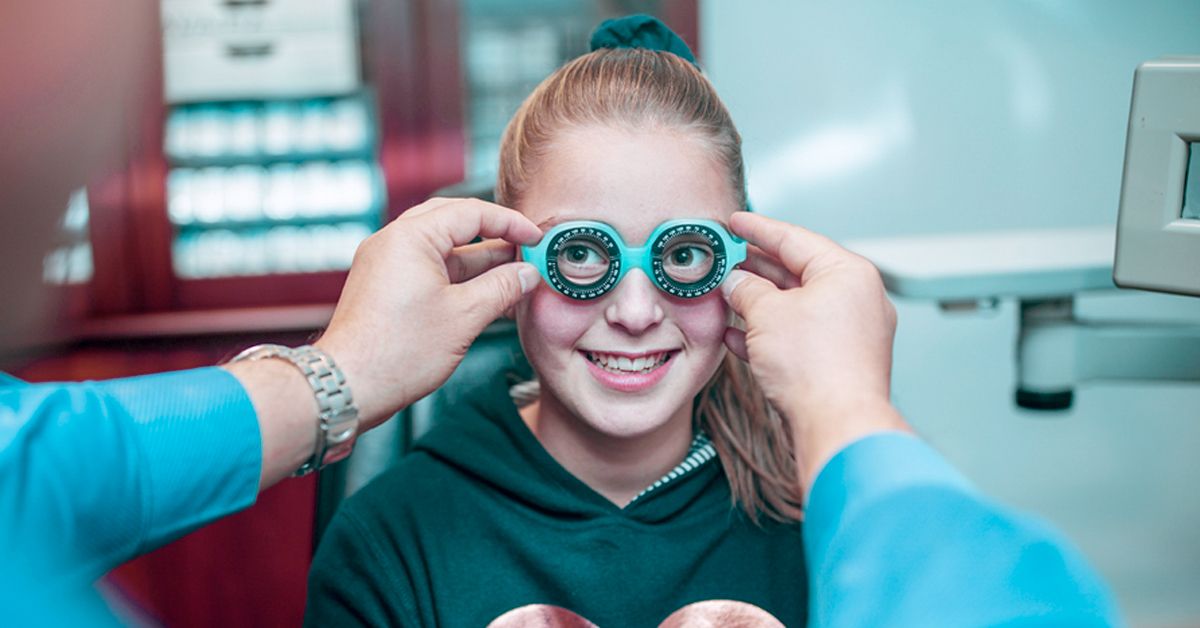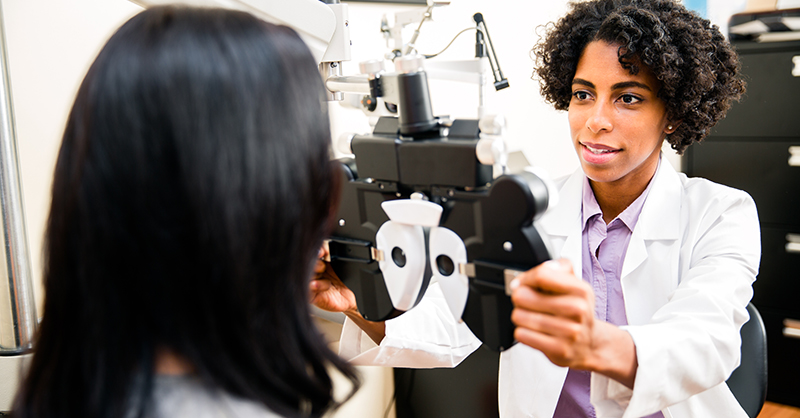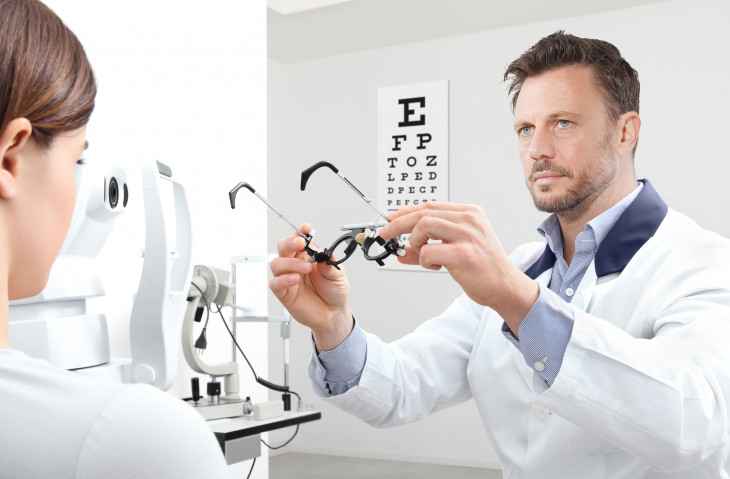Discovering the current Technical Innovations in Optometry and What They Mean for Eye Doctors
From the precision of Optical Comprehensibility Tomography to the nuanced insights used by AI-driven analysis devices, these advancements are establishing brand-new criteria in patient assessment and treatment. As these improvements permeate the method, eye doctors are encountered with the challenge of accepting these tools to boost patient end results.
Advancements in Diagnostic Devices
Advancing the area of optometry, advancements in analysis devices have transformed the way eye care specialists assess and detect eye conditions and visual impairments. The previous decade has actually observed substantial technological advancements, allowing more detailed and precise assessments.
An additional secret innovation is the introduction of innovative corneal topography systems, which map the surface area curvature of the cornea with precision. These tools are especially advantageous for fitting get in touch with lenses and identifying corneal conditions. Moreover, electronic retinal imaging has transformed traditional ophthalmoscopy, using thorough, panoramic views of the retina that assist in detailed aesthetic assessments.
The development of wavefront aberrometry has also been critical, enabling the analysis of refractive errors with unmatched accuracy (Optometrist Chino). This technology assists in customizing restorative lenses and boosting medical end results for refractive surgeries. Collectively, these diagnostic developments encourage eye doctors to supply remarkable individual treatment, making certain very early treatment and tailored treatment methods, eventually enhancing aesthetic health outcomes
AI in Patient Monitoring
Structure on the structure of cutting-edge analysis devices, the consolidation of expert system (AI) in patient management stands for a transformative leap for optometry. AI systems are progressively used to enhance effectiveness, precision, and customization in individual care. By evaluating vast amounts of information, AI can recognize patterns and anticipate potential ocular problems, allowing optometrists to tailor interventions extra effectively. This capability is important in managing persistent eye illness such as glaucoma and diabetic retinopathy, where early detection and continuous surveillance are crucial.
Additionally, AI-driven platforms help with structured client communications and administrative processes. Automated organizing, virtual appointments, and personalized follow-up plans not just improve client complete satisfaction however additionally optimize time administration for practitioners. These systems can triage people based on the seriousness of their problems, making sure that those in vital demand receive timely interest.
Moreover, AI boosts decision-making by providing optometrists with evidence-based referrals and treatment paths. By incorporating information from electronic wellness records, AI tools provide insights that inform scientific choices, reducing the threat of errors and enhancing individual end results. As AI remains to progress, its function in individual management will likely broaden, improving the landscape of optometric treatment.
Advances in Retinal Imaging
In the world of optometry, retinal imaging has actually observed remarkable technical innovations that are boosting analysis capacities and client treatment. Advancements such as Optical Comprehensibility Tomography (OCT) and fundus digital photography have actually transformed exactly how optometrists imagine and analyze the retina. OCT, specifically, provides high-resolution, cross-sectional images of the retina, enabling the detailed examination of its layers. This capacity is indispensable for very early detection and management of conditions like glaucoma, diabetic retinopathy, and age-related macular degeneration.
Enhanced imaging methods like OCT angiography are additional refining analysis precision. Optometrist Chino. Such advancements promote the identification of min retinal changes that might signify illness development.
Additionally, innovations in expert system are enhancing retinal imaging by allowing automated analysis of large datasets. These systems aid optometrists in recognizing patterns indicative of pathology, thus improving diagnostic precision and performance. Jointly, these developments are transforming retinal imaging right into a cornerstone of modern eye care, boosting outcomes and expanding restorative possibilities.
Teleoptometry's Expanding Role
Teleoptometry is increasingly coming to be a vital component of eye treatment, driven by improvements in electronic interaction and analysis tools. This is especially useful in country and underserved locations where accessibility to specialized eye care is commonly restricted.
The integration of expert system (AI) further try this site boosts teleoptometry, allowing the analysis of visual data and assisting in the detection of eye conditions such as glaucoma and diabetic person retinopathy. AI-powered algorithms can rapidly translate intricate imaging information, providing eye doctors with important insights this article that boost professional decision-making.
In addition, teleoptometry sustains connection of treatment with smooth assimilation with digital health documents (EHRs), allowing optometrists to maintain detailed patient backgrounds. When seeking advice from with different professionals., this ensures that clients receive tailored and consistent care also.
In spite of these advantages, obstacles continue to be, including making sure data safety and taking care of patient expectations. However, teleoptometry stands for a significant stride towards even more accessible, reliable, and patient-centered eye treatment. As modern technology advances, its role is poised to increase better.

Future Fads in Eye Care
A myriad of ingenious trends is set to improve the future of eye care, driven by technical advancements and the advancing needs of patients. One significant trend is the assimilation of artificial intelligence (AI) in diagnostics, which assures to boost the precision and effectiveness of eye assessments. AI algorithms can analyze vast quantities of information from retinal pictures, potentially detecting problems like diabetic person retinopathy and glaucoma earlier than typical approaches.
Additionally, personalized medicine is obtaining grip in optometry, with genetic testing informing tailored treatment strategies. This strategy aims to enhance client outcomes by customizing interventions to individual hereditary profiles. Wearable modern technology, such as smart contact lenses, is additionally imminent, offering real-time surveillance of intraocular stress or glucose degrees, therefore providing continuous understandings into eye and systemic wellness.
The adoption of increased truth (AR) and digital reality (VIRTUAL REALITY) in training and individual education and learning is one more emerging trend. These innovations offer immersive experiences that can boost understanding and skills both for eye doctors and patients. As these fads advance, optometrists have to stay abreast of technical developments to give cutting-edge treatment, ensuring improved individual outcomes and fulfillment in the vibrant landscape of eye care.
Final Thought

Collectively, these analysis improvements equip eye doctors to provide exceptional patient care, making sure early treatment and tailored treatment techniques, ultimately improving aesthetic health end results.

As these modern technologies continue to advance, optometrists need to adjust and incorporate them right into method, inevitably maximizing workflow effectiveness and raising the standard of eye care provided to people.